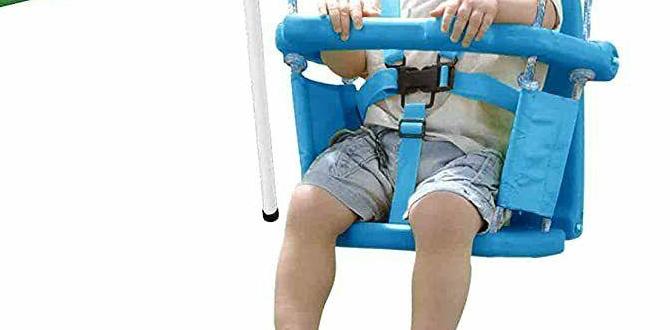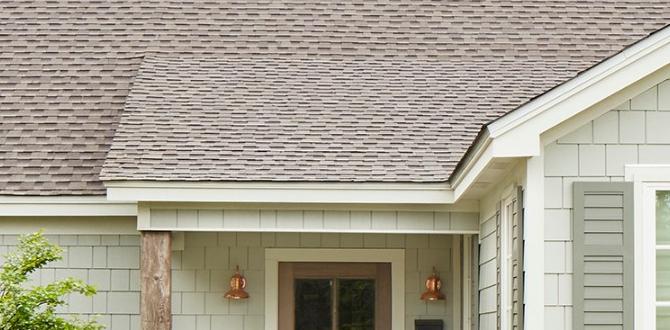A cat outdoor house for winter provides a safe, insulated shelter from cold, wind, and snow, ensuring your feline friend stays warm and comfortable during chilly months.
The crisp autumn air is lovely, but it also signals the arrival of winter. For our feline companions who spend time exploring the outdoors, this transition can be quite chilly. If your cat enjoys venturing outside, even when the temperatures drop, providing them with a warm and safe retreat is a top priority. A cozy outdoor house is more than just a shelter; it’s a vital sanctuary that can make all the difference in keeping them comfortable and healthy during the coldest days. Let’s explore how to create the perfect winter haven for your outdoor cat.
<h2>Why Your Outdoor Cat Needs a Winter Sanctuary</h2>
<p>While many cats have thick fur coats, they aren’t always equipped to handle the extreme conditions winter can bring. Freezing temperatures, biting winds, and heavy snow can pose significant risks to an outdoor cat’s well-being. Hypothermia, frostbite, and dehydration are serious concerns. Furthermore, a lack of adequate shelter can lead to increased stress and a weakened immune system, making them more susceptible to illness. Providing a dedicated outdoor house ensures your cat has a reliable place to escape the elements, conserve energy, and feel secure, even in harsh weather.</p>
<h2>Key Features of an Ideal Cat Outdoor House</h2>
<p>When selecting or building a winter house for your cat, several crucial features should be considered to maximize warmth, comfort, and safety. These elements are designed to protect your cat from the worst of winter’s challenges.</p>
<h3>Insulation is Paramount</h3>
<p>The primary goal of a winter house is to trap body heat and keep the elements out. Proper insulation is key to achieving this. Materials like foam board (polystyrene) or fiberglass insulation can significantly improve the thermal performance of the house. Even a simple layer of straw can also provide excellent insulation, as it traps air and creates a warm barrier.</p>
<h3>Elevated and Waterproof Base</h3>
<p>To prevent cold and moisture from seeping in from the ground, the cat house should be elevated. A few inches off the ground is sufficient. Using a waterproof base material, like treated plywood or a sturdy plastic, will add an extra layer of defense against dampness. This also helps in keeping the interior dry, which is crucial for warmth.</p>
<h3>Draft-Free Design</h3>
<p>Cold air can easily enter through gaps and openings. The design should minimize drafts. This means sealing any cracks or holes in the walls and roof. While ventilation is necessary to prevent moisture buildup, it should be strategic and allow for fresh air without creating direct drafts on the cat’s resting area. Overlapping entry flaps can also help keep wind from blowing directly into the shelter.</p>
<h3>Appropriate Size</h3>
<p>The house should be large enough for your cat to stand up, turn around, and lie down comfortably, but not so large that their body heat disperses too quickly. A snugger fit generally helps retain warmth more effectively. For a single cat, a house around 18x24x18 inches (length x width x height) is usually adequate.</p>
<h3>Weather-Resistant Exterior</h3>
<p>The outer shell of the house needs to withstand rain, snow, and sun. Treated plywood, cedar, or durable plastic are good choices. The roof should be sloped to allow precipitation to run off easily, preventing leaks and structural damage. Waterproof sealants and paints can further enhance durability.</p>
<h3>Entrances and Exits</h3>
<p>It’s beneficial to have at least two entrances, preferably on opposite sides of the house. This provides an escape route if a predator is present and allows for better air circulation without direct drafts. Hinged or flap-style doors made from heavy-duty vinyl or rubber can help keep out the wind and rain while still allowing easy access.</p>
<h2>DIY vs. Store-Bought: Which is Right for You?</h2>
<p>Deciding whether to build or buy a cat outdoor house depends on your resources, time, and DIY skills. Both options offer distinct advantages.</p>
<h3>Purchasing a Readymade Cat House</h3>
<p>The biggest advantage of buying a cat house is convenience. Many companies offer well-designed, pre-assembled shelters that are ready to place in your yard. These often come with features like insulation, elevated bases, and durable materials. Look for reputable brands known for quality and pet-friendly construction. Some popular options include:</p>
<ul>
<li><a href=”https://www.amazon.com/ASL-Solutions-Outdoor-Heated-Shelter/dp/B009T9F7Y2″ target=”_blank”>ASL Solutions Heated Pet Shelter</a></li>
<li>Snuggle Safe Outdoor Pet House</li>
<li>Kitty Tube Indoor/Outdoor Cat House</li>
</ul>
<p>When purchasing, carefully check the product descriptions for insulation levels, material quality, and ease of cleaning. Reading customer reviews can also provide valuable insights.</p>
<h3>Building Your Own Cat House</h3>
<p>Building a cat house offers the advantage of customization. You can tailor the size, design, and features precisely to your needs and your cat’s preferences. It can also be a more cost-effective option if you have some basic tools and materials on hand. Plus, the satisfaction of creating a cozy haven for your pet is immense!</p>
<h2>Simple DIY Cat House Plan: A Step-by-Step Guide</h2>
<p>Here’s a straightforward plan for building a basic, yet effective, insulated outdoor cat house. This project is beginner-friendly and uses common materials.</p>
<h3>Materials You’ll Need:</h3>
<ul>
<li>One sheet of ¾-inch exterior-grade plywood (4 ft x 8 ft)</li>
<li>One sheet of ½-inch foam board insulation (optional, for extra warmth)</li>
<li>Wood screws (1 ¼-inch and 2-inch)</li>
<li>Waterproof wood glue</li>
<li>Hinges (for roof access, optional but recommended)</li>
<li>Heavy-duty vinyl or rubber sheeting for door flaps</li>
<li>Exterior-grade paint or sealant</li>
<li>Sandpaper</li>
<li>Straw (for bedding) or pet-safe insulation</li>
</ul>
<h3>Tools You’ll Need:</h3>
<ul>
<li>Saw (hand saw, circular saw, or jigsaw)</li>
<li>Drill/driver with appropriate bits</li>
<li>Measuring tape</li>
<li>Pencil</li>
<li>Safety glasses</li>
</ul>
<h3>Cutting the Plywood:</h3>
<p>Based on an 18″x24″x18″ internal dimension (adjust as you see fit), you’ll cut the following pieces from your ¾-inch plywood:</p>
<ul>
<li>Floor: 18″ x 24″</li>
<li>Front Wall: 18″ (width) x 18″ (height) – include an entry hole 6″ diameter, about 4-5″ from the bottom.</li>
<li>Back Wall: 18″ (width) x 20″ (height) – the extra height allows for a sloped roof.</li>
<li>Side Walls (x2): 24″ (width, at base) x 18″ (front height) tapering to 20″ (back height). You can cut a simple rectangle 24″x20″ and then cut the angle for the roof slope.</li>
<li>Roof: 26″ x 30″ (this allows for overhang)</li>
</ul>
<p>(*Note: These dimensions account for the thickness of the plywood so the internal space is roughly the target size. Adjust as needed.)</p>
<h3>Assembly Steps:</h3>
<ol>
<li><strong>Prepare the Pieces:</strong> Sand all edges smooth to prevent splinters for both you and your cat.</li>
<li><strong>Add Insulation (Optional):</strong> If using foam board insulation, cut pieces to fit the inside of the walls and floor. You can secure them with a thin bead of waterproof glue or simply fit them snugly. Then, cut and fit these insulation panels inside the walls and floor sections of your plywood house.</li>
<li><strong>Assemble the Walls:</strong> Attach the side walls to the edges of the floor piece using wood glue and 1 ¼-inch screws from the bottom of the floor up into the wall edges. Ensure the sloped edge of the side walls is at the top.</li>
<li><strong>Attach Front and Back Walls:</strong> Apply wood glue to the edges where the front and back walls meet the side walls and floor. Secure them with 1 ¼-inch screws, driving them from the outside of the front/back walls into the edges of the side walls and floor.</li>
<li><strong>Create the Entry Hole:</strong> Using a jigsaw, carefully cut out the entry hole in the front panel. Smooth the edges with sandpaper. If desired, attach vinyl flaps over the hole using small screws or staples.</li>
<li><strong>Attach the Roof:</strong> For a fixed roof, apply glue to the top edges of the walls and position the roof piece, ensuring an overhang on all sides. Secure with 2-inch screws from the top down into the walls. For easier cleaning, attach the roof to the back wall using hinges, and add a hook-and-eye latch to the front to keep it secured.</li>
<li><strong>Seal and Paint:</strong> Once fully assembled, especially if you didn’t use exterior-grade plywood, apply a few coats of pet-safe, exterior-grade paint or sealant to all exterior surfaces. This protects the wood from moisture and UV rays. Ensure it’s fully dry and aired out before your cat uses it.</li>
<li><strong>Elevate the House:</strong> You can add small wooden blocks or feet to the bottom of the floor to lift it off the ground, or simply place larger, stable rocks beneath the corners.</li>
</ul>
<h2>Choosing the Right Location for the Cat House</h2>
<p>Placing the outdoor house in the right spot is just as important as building it well. Consider these factors:</p>
<ul>
<li><strong>Shelter from Wind and Weather:</strong> Position the house so the entrance faces away from prevailing winds. Nestling it under a sturdy bush, porch overhang, or against a building can provide additional protection.</li>
<li><strong>Sun Exposure:</strong> In colder climates, try to place it where it can receive some direct sunlight, especially in the morning. This can help warm the interior naturally.</li>
<li><strong>Proximity to Home:</strong> Cats often feel more secure if the shelter is somewhat visible from your house or a main access point, so they know they can get your attention or reach safety.</li>
<li><strong>Drainage:</strong> Ensure the area around the house drains well so it doesn’t sit in puddles or accumulated snow melt.</li>
<li><strong>Accessibility:</strong> Make sure the path to the house is clear of snow and ice, especially the entrance.</li>
</ul>
<h2>Bedding and Comfort: Keeping it Cozy Inside</h2>
<p>Once the house is built and placed, the interior needs to be inviting and warm. The right bedding makes a huge difference.</p>
<h3>The Magic of Straw</h3>
<p>For winter insulation, straw is often the best choice. Unlike hay, straw is hollow, which traps air and provides excellent insulation. It also tends to resist moisture better than many other bedding materials. Avoid using blankets or towels as they can absorb moisture and freeze, making the environment colder.</p>
<p><strong>How to use straw:</strong> Fill the bottom of the house generously with straw, at least 4-6 inches deep. Fluff it up to create a warm, comfortable nest for your cat. You can replace the straw periodically, especially after heavy snowfall or if it becomes damp.</p>
<h3>Other Considerations</h3>
<p>If straw isn’t readily available, consider using pet-safe, non-toxic insulation materials. Cedar shavings can also provide some insulation and a pleasant scent, but ensure they are used sparingly and that your cat doesn’t ingest them. The key is to provide a dry, draft-free space with good insulating bedding, ensuring your cat can burrow down and stay warm.</p>
<h2>Heated Options for Extreme Cold</h2>
<p>For regions experiencing very harsh winters with prolonged sub-zero temperatures, a heated option can provide an extra layer of security. It’s important to use pet-specific, low-voltage heating pads or mats designed for outdoor use. These are designed to warm to a safe temperature and provide a consistent, gentle heat.</p>
<p>When choosing a heated option:</p>
<ul>
<li><strong>Safety First:</strong> Always opt for products with Met (Middle East) or ETL (Electronic Test Laboratory) certification, indicating they’ve met safety standards.</li>
<li><strong>Weatherproof:</strong> Ensure the heating element and cord are fully waterproof and designed for outdoor use.</li>
<li><strong>Thermostatically Controlled:</strong> Look for units that automatically turn on when the temperature drops below a certain point and off when it warms up.</li>
<li><strong>Placement:</strong> Position the heating pad in a way that it doesn’t radiate excessive heat when the




